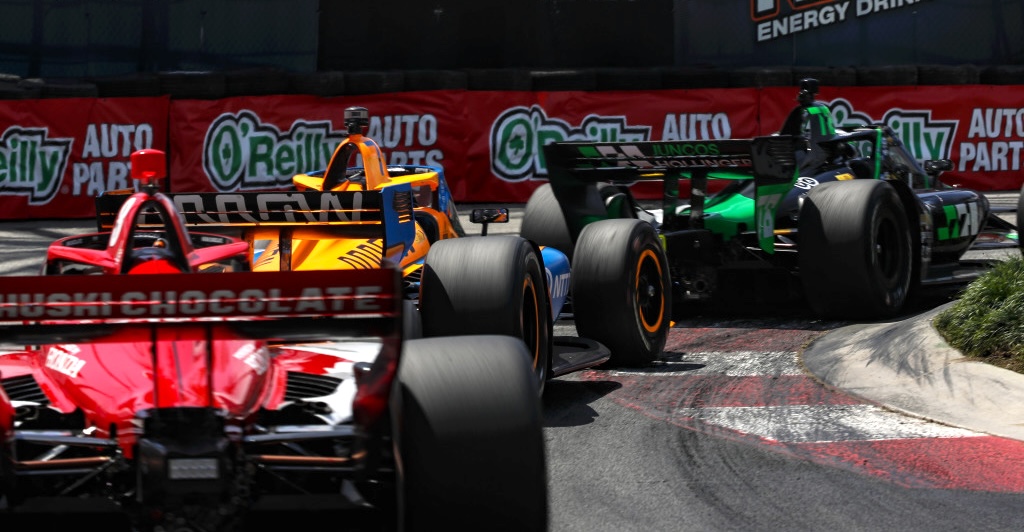On its current trajectory, the NTT IndyCar Series’ plans for going hybrid near the halfway point of the 2024 season should bring a return to significant horsepower displays in short bursts.
Starting with the 2.2-liter twin-turbo V6 IndyCar engines built by Chevrolet and Honda which generate somewhere between 725-750hp in high-boost configuration used on road/street courses and short ovals, the addition of the series’ new energy recovery systems will give drivers another 60hp or so to deploy with the push of a button on the steering wheel.
And in a welcome revision to IndyCar’s original plans, drivers will also have the longstanding turbo-based push-to-pass system, which contributes around 50hp when activated. As needed, they’ll have the option to use the turbo or ERS power-addition options independently or combined.
During the brief periods when drivers elect to engage both push-to-pass power contributions, they’ll have have upwards of 850hp being fired through their rear Firestone tires, which will mark the first time Indy cars have surpassed the 800hp threshold since the CART/Champ Car era in the 2000s.
[lawrence-auto-related count=3 category=1408]
“You’ve got to be on qualifying power with energy deployment and push-to-pass active,” Andretti Global’s Kyle Kirkwood told RACER. “It’s not like the hybrid system can hold enough juice to run an entire straight flat out; that would just require too big of a battery. But for short bursts, like off the corners. you’re gonna be looking at around 850 horsepower.”
Team Penske’s Will Power, who got to drive some of the high-power Champ Car models before moving over to the IndyCar Series, says the double punch of extra turbo boost and the ERS unit deploying in unison is an impressive gain in performance.
“Yeah, big time; it does help you to jump off the corners,” Power explained. “It’s a very good supplement to the engine formula we have, being low-displacement and low-torque. Combined with push-to-pass with the turbos, it will be quite a lot of power when it’s all going hard when everything is activated.”
In isolation without the turbo push-to-pass system engaged, the ERS units made in partnership by Chevrolet and Honda provide a healthy surge of power when the motor generator units are commanded to spin and release accelerative energy to the tires through the transmission. It’s here where the MGU will often be asked by its users to act as a torque-fill device while exiting slower turns when the small turbo V6 internal combustion engines are at the bottom of their rev range and unable to offer much torque to provide swift launches.
Thanks to the ability for the MGU to fire instant torque to the rear tires, IndyCar drivers will accelerate harder and reach top speeds faster with the ERS unit activated while leaving Long Beach’s Turn 11 hairpin, Mid-Ohio’s Keyhole, and all the other corners on the calendar where drivers have had to wait for the turbo V6s to spool up and go.
“Even just using the MGU, it’s really good as it gives you a lot of torque at the low rev range when you’d really want it coming off a corner,” Power said. “Even 60 horsepower more is a lot of power at that low rev range, because it’s instant power. You look at where the power and torque curves normally start, and you can see the MGU makes a nice change to it already.”
